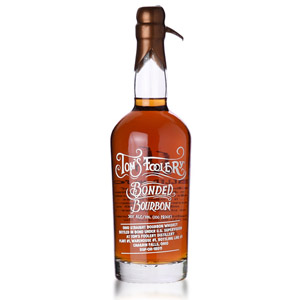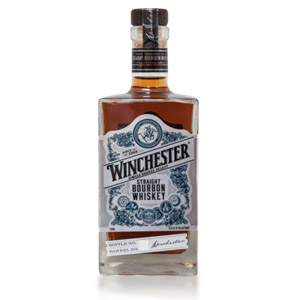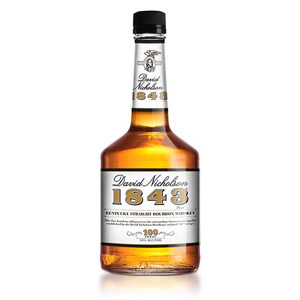In an attempt to avoid beating a dead horse, I’ve waited until I could taste the latest (batch 3) of Tom’s Foolery Bonded Bourbon before bothering you all again with this topic. To recap, I really really really wanted to like the first batch because it epitomizes (to me) what craft whisky is (or should be) all about: One man’s passion for craftsmanship and attention to detail overcoming the odds to compete with “big bourbon” on their own turf. I tried so hard to like it that I gave it a followup head-to-head against a similar midwestern bourbon, with no better result.
I wasn’t going to shell out another $50 for a new bottle, nor ask poor Tom to send me some on his dime, so all might have been lost had I not received a sample of Batch 3 from a generous benefactor (thanks, David!).
Unlike Batch 1, Batch 3 consists of a blend of two different casks of bonded bourbon. The first is 75% Yellow Dent corn, 13% Winter Rye, and 12% 6-Row Barley. The second cask is 51% Yellow Dent corn, 32% Winter Rye, 8% malted Winter Rye, and 8% wheat. The second is unusual due to its combination of malted and unmalted rye, and its use of wheat instead of barley for enzymes in a high-rye mashbill. Both barrels are slightly older than 4 years. Okay, I have to geek out for a second. The website actually lists details such as the grain mill sources, distillation specifics, and exact age of each barrel (4 years, 3 months and 4 years, 5 months respectively). That is some seriously dedicated transparency! *cough* To continue… Together, these casks yielded a batch of 466 bottles at 50% ABV (100 proof, a requirement for the Bottled-in-Bond label).
So, can I finally salve my conscience (and simultaneously ease my anxiety about the reliability of my palate) by evaluating Batch 3? I did the following taste-test with a glass of Batch 1 for direct comparisons.
Nose: Cinnamon and clove. Cinnamon rolls and hot monkey bread. Nice, soft round wheat aromas, in a delicate (and successful) balance with spicy rye elements – baking spices and drippy pine resin. Anise (cardamom maybe), woodsy, and only very slightly suggestive of brown paper bag (wood fibers). After a rest in the glass, lemon peel. A lot going on in there.
Palate: Syrupy body, with a medium burn (not bad for 100 proof). Honey up front (candy corn), with flecks of saltwater taffy, malty rye notes (marshmallow and malted milk balls, minus the chocolate), and pine sap. Nicely balanced, and on the dry side, so it’s not cloying. Medium amount of wood influence, although it tastes like pine, not oak (yes, I know it’s not a pine barrel).
Finish: Long, slightly warming. Lemony (like scented furniture polish), brown sugar. Fades with drying oaky tannins and no bitterness.
With Water: Several drops of water initially mute the nose, then open up a bit of vanilla frosting. The palate is sweeter, but seems to have lost some complexity. The finish, also, is fuller and has more sweet vanilla and white chocolate, but something feels like it’s been lost. Try both with and without water.
Overall: Hallelujah! While my bottle of Batch 1 is still strongly suggestive of a pine furniture warehouse dissolving in a vat of Mentholatum, even side-by-side the difference is remarkable. Batch 3 is complex and robust, with a fetching balance of wispy pine notes (like the scent of the air in a pine forest), soft grains, and potent spices. This is the bourbon I expected to get the first time around. Woodsy and powerful but also complex and in-balance. When I imagine a hardworking solo distiller making frontier whisky on antique stills from local ingredients, I imagine THIS flavor. Now, at last, I can recommend it.








